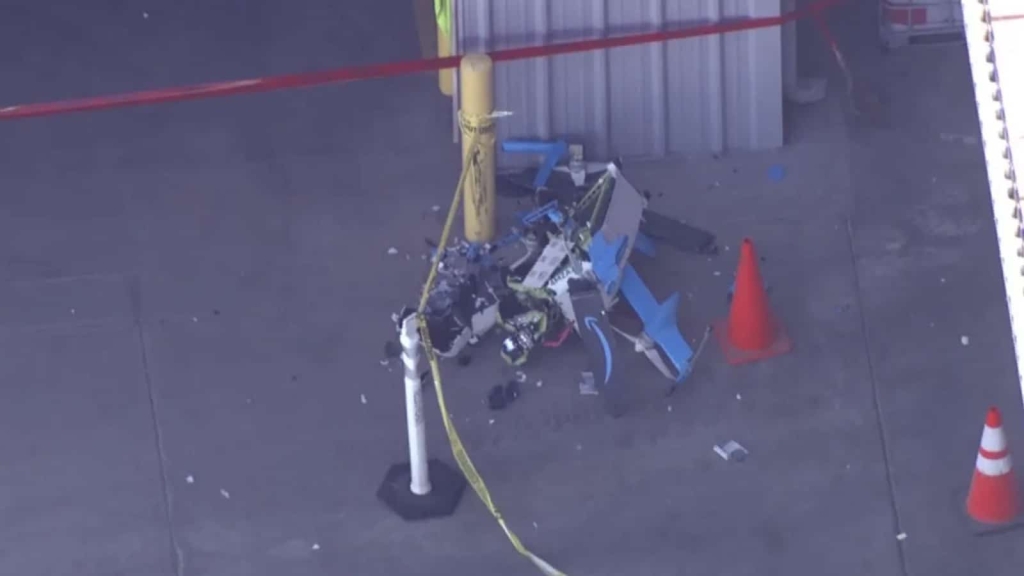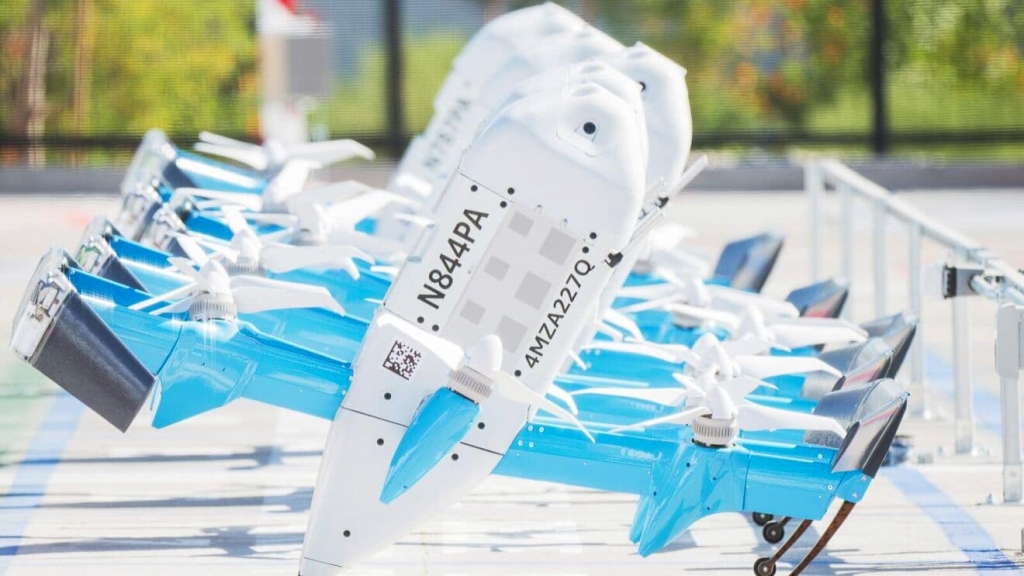Amazon Resumes Drone Deliveries Days After Tolleson Crane Crash And Fire

Amazon DEALS: DJI Mini 4K now $249 (-17%) and DJI Osmo Action 4 drops to $249!
Amazon will resume Prime Air drone deliveries near Phoenix on Friday, just two days after two of its MK30 drones collided with a construction crane in Tolleson and one caught fire on the ground. The swift return to operations comes even as the National Transportation Safety Board launches an investigation into Wednesday’s incident—the latest in a string of crashes that have plagued the program throughout 2025.
The decision to restart so quickly raises questions about whether Amazon is prioritizing speed over thorough safety reviews, especially given the company’s troubled track record this year.
Wednesday’s Collision: Crane Strike and Fire
The incident occurred just after 10 a.m. Wednesday near Roosevelt Street and 97th Avenue in Tolleson. According to Tolleson Police Sgt. Erik Mendez, “It is believed Amazon Air had two unmanned aerial delivery systems flying northeast back to back when they both impacted an extended crane” that was conducting roof work on a business.
A preliminary FAA notice revealed that one of the aircraft caught fire on the ground after the collision. The FAA and National Transportation Safety Board both confirmed they are investigating the crashes. “The NTSB is investigating the collision Wednesday of two Amazon Prime Air delivery UAS (drones) into a crane in Tolleson, Arizona,” the agency announced on social media Thursday.
The two MK30 drones landed in separate parking lots after striking the crane. Phoenix Hazmat responded to the scene due to reported smoke and damaged lithium-ion batteries from the fire.
Amazon’s Swift Return: Enhanced Visual Inspections
Despite the ongoing federal investigation, Amazon plans to resume Tolleson operations Friday. Company spokesperson Terrence Clark told Bloomberg that Amazon has “completed our own internal review of this incident and are confident that there wasn’t an issue with the drones or the technology that supports them.”
However, Clark acknowledged the company has “introduced additional processes like enhanced visual landscape inspections to better monitor for moving obstructions such as cranes.”
That solution—essentially more careful human observation—may strike drone safety experts as inadequate given that the MK30 is specifically designed to automatically detect and avoid obstacles in flight. The collision suggests either a failure in the drone’s autonomous systems or gaps in pre-flight planning that didn’t account for the construction crane’s presence.
A Pattern of 2025 Incidents
This crane collision marks the second operational pause for Amazon Prime Air in 2025. In January, the company halted operations in both Tolleson and College Station, Texas after two MK30 drones crashed during testing in Oregon in December 2024.
Those crashes were caused by faulty LiDAR sensors that confused rain for the ground, causing the drones to shut down their propellers at over 200 feet (61 meters) altitude and plummet to earth. Both aircraft were destroyed. The NTSB investigation revealed that a software update had made the sensors more susceptible to rain interference.
Amazon didn’t resume operations until April, after receiving FAA approval for software fixes. Yet just months later, the company faces another crash and another investigation.
Other 2025 incidents include:
- July: An Amazon drone dropped a customer’s package into a swimming pool in Avondale
- May: An MK30 made what Amazon called a “precautionary controlled landing” at a Tolleson apartment complex
The pattern suggests Amazon’s MK30 drones face challenges with both sensor reliability and obstacle detection in real-world urban environments.
Technology vs. Reality: Can the MK30 Handle Urban Complexity?
Amazon’s MK30 drones operate within a 7-mile (11 km) radius of the Tolleson fulfillment center, serving parts of Avondale, Goodyear, Glendale, and West Phoenix. The 80-pound (36 kg) aircraft can carry packages up to 5 pounds (2.3 kg) and travel at speeds up to 73 mph (117 km/h).
The drones are equipped with cameras and sensors designed to detect and navigate around obstacles like trampolines, clotheslines, and other aircraft. Yet the crane collision demonstrates these systems have limitations when it comes to extended construction equipment—a common sight in urban and suburban areas where Amazon hopes to scale operations.
The company has ambitious expansion plans, aiming to deliver 500 million packages annually by drone by 2029. However, current operations remain limited to just two U.S. markets: Tolleson and College Station, Texas. Planned expansions to Kansas City, San Antonio, and international markets including the UK and Italy now face scrutiny in light of the latest incident.

DroneXL’s Take
Amazon’s decision to resume operations 48 hours after a crane collision and fire—while the NTSB investigation is still in its early stages—is eyebrow-raising. The company’s confidence that “there wasn’t an issue with the drones or the technology” seems premature when federal investigators have barely begun their work.
More concerning is Amazon’s proposed fix: “enhanced visual landscape inspections.” This suggests the company is treating Wednesday’s collision as a planning failure rather than a technology failure. But here’s the problem—construction sites are dynamic environments where cranes extend and retract throughout the day. If Amazon’s solution is better human observation of temporary obstacles, that’s a tacit admission that the MK30’s autonomous detect-and-avoid systems can’t be relied upon to handle real-world urban complexity.
Let’s be clear: this is the second operational pause in 2025, and we’re barely into October. The December Oregon crashes that forced the January shutdown were caused by sensor failures in light rain. Now we have drones flying into stationary cranes that should have been visible to their cameras and sensors. These are fundamentally different failure modes, which suggests the MK30’s problems aren’t limited to one subsystem.
The fire adds another layer of concern. Lithium-ion battery fires in crashed drones could pose risks in residential areas where Amazon is dropping packages. One fire in a customer’s yard or on a roof could end the entire program.
Amazon’s 500 million annual deliveries goal by 2029 looks increasingly like fantasy. The company can’t maintain consistent operations in two test markets without crashes every few months. Resuming flights before the NTSB determines what went wrong—and whether similar obstacles could cause future collisions—prioritizes delivery quotas over safety. That’s not the kind of decision-making that inspires confidence in autonomous delivery systems sharing airspace above our homes.
The NTSB investigation will likely take months. Amazon should wait for its findings before restarting operations. Instead, they’re back in the air today.
What do you think? Share your thoughts in the comments below.
